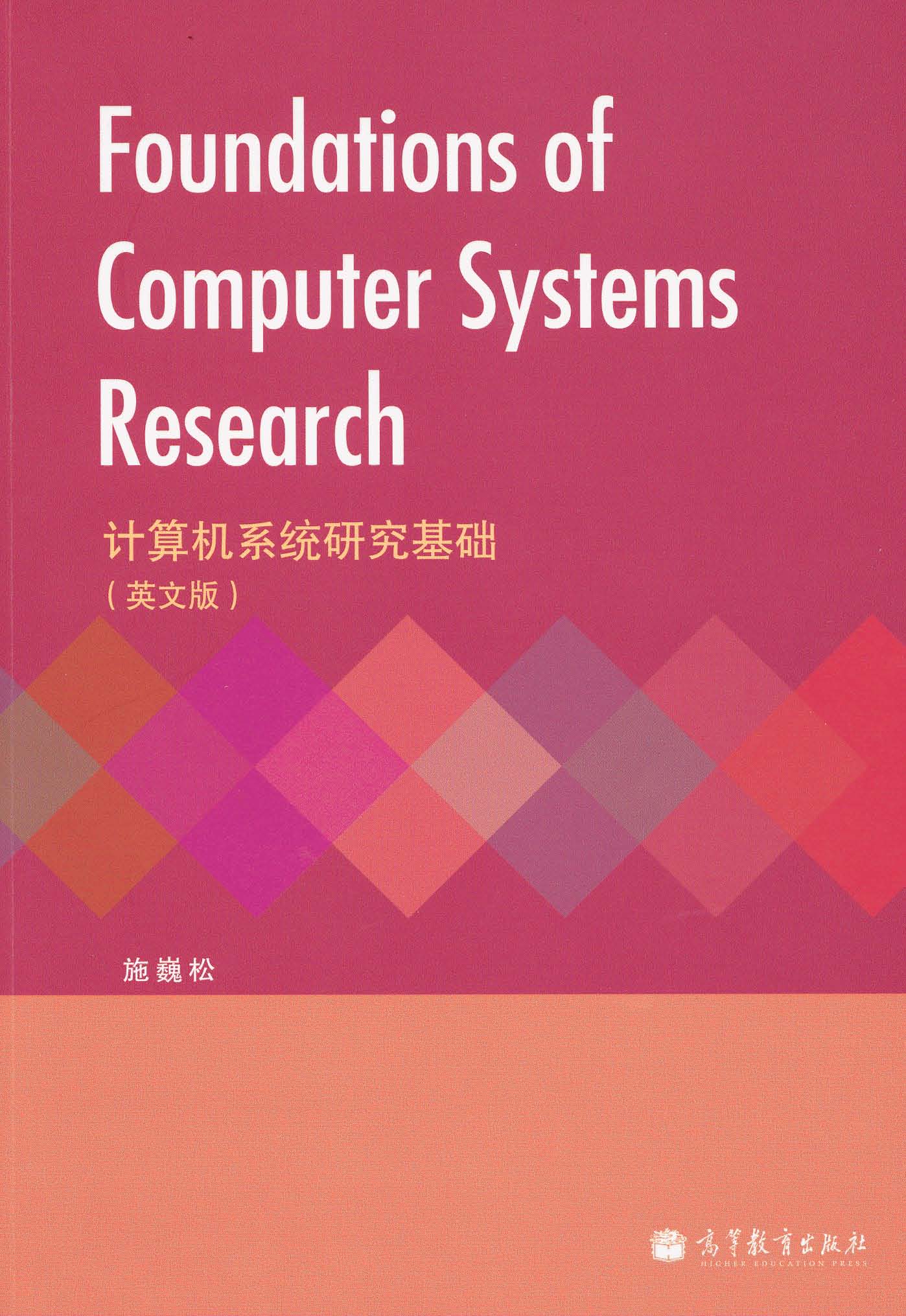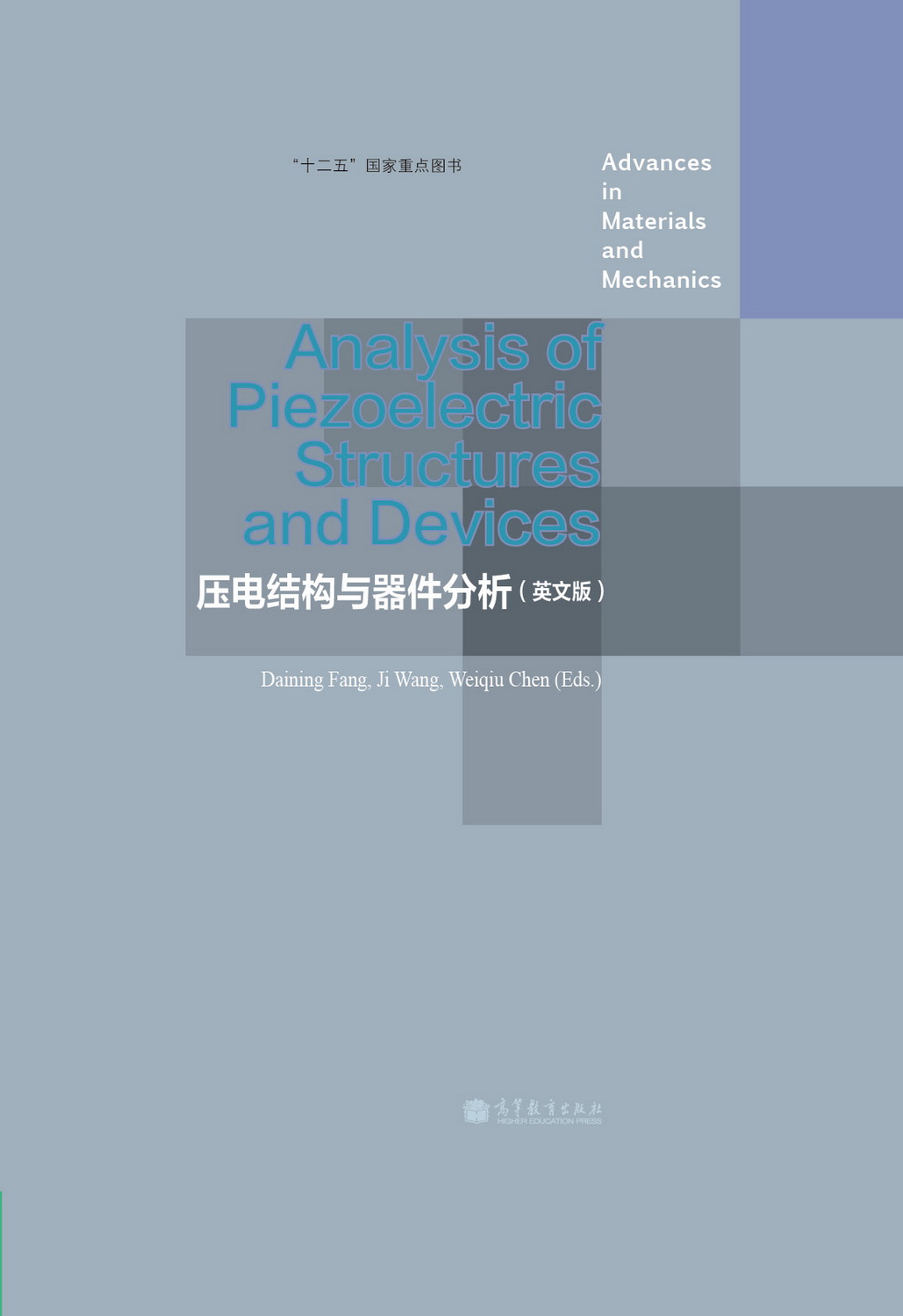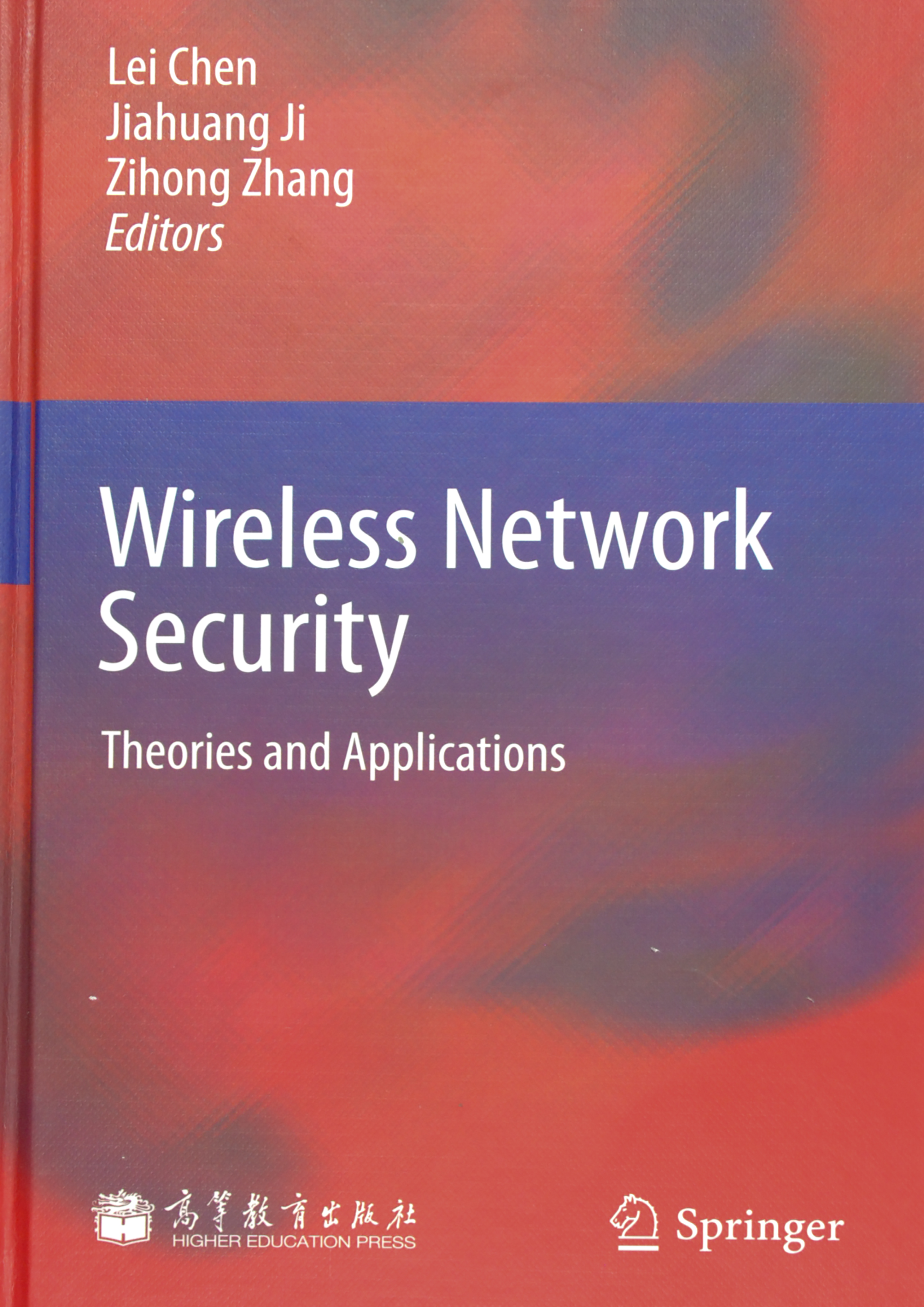TCP/IP详解卷1:协议(英文版)(第2版) / 经典原版书库
定价:¥129.00
作者: Kevin R.Fall,W.Richard Stevens
出版时间:2012-06
出版社:机械工业出版社
- 机械工业出版社
- 9787111382287
- 1版
- 319042
- 44219978-2
- 平装
- 16开
- 2012-06
- 1571
- 1047
- 计算机类
- 本科
作者简介
内容简介
《TCP/IP详解》是已故网络专家、著名技术作家W. Richard Stevens的传世之作,内容详尽且极具专业,被誉为TCP/IP领域的不朽名著。
《TCP/IP详解·卷1:协议(英文版第2版)》是《TCP/IP详解》的第1卷,主要讲述TCP/IP协议,结合大量实例讲述TCP/IP协议族的定义原因,以及在各种不同的操作系统中的应用及工作方式。第2版在保留Stevens卓越的知识体系和写作风格的基础上,新加入的作者Kevin R. Fall结合其作为TCP/IP协议研究领域领导者的尖端经验来更新本书,反映了全新的协议和很好的实践方法。首先,他介绍了TCP/IP的核心目标和体系结构概念,展示了它们如何能连接不同的网络和支持多个服务同时运行。接着,他详细解释了IPv4和IPv6网络中的互联网地址。然后,他采用自底向上的方式来介绍TCP/IP的结构和功能:从链路层协议(如Ethernet和Wi-Fi),经网络层、传输层到应用层。
书中依次全面介绍了ARP、DHCP、NAT、防火墙、ICMPv4/ICMPv6、广播、多播、UDP、DNS等,并详细介绍了可靠传输和TCP,包括连接管理、超时、重传、交互式数据流和拥塞控制。此外,还介绍了安全和加密的基础知识,阐述了当前用于保护安全和隐私的重要协议,包括EAP、IPsec、TLS、DNSSEC和DKIM。
本书适合任何希望理解TCP/IP协议如何实现的人阅读,更是TCP/IP领域研究人员和开发人员的专业参考书。无论你是初学者还是功底深厚的网络领域高手,本书都是案头必备,将帮助你更深入和直观地理解整个协议族,构建更好的应用和运行更可靠、更高效的网络。
本书特色:
·W. Richard Stevens传奇般的TCP/IP指南,现在被顶端网络专家Kevin R. Fall更新,反映了新一代的基于TCP/IP的网络技术。
·展示每种协议的实际工作原理,并解释其来龙去脉。
·新增加的内容包括RPC、访问控制、身份认证、隐私保护、NFS、SMB/CIFS、DHCP、NAT、防火墙、电子邮件、Web、Web服务、无线、无线安全等。
《TCP/IP详解·卷1:协议(英文版第2版)》是《TCP/IP详解》的第1卷,主要讲述TCP/IP协议,结合大量实例讲述TCP/IP协议族的定义原因,以及在各种不同的操作系统中的应用及工作方式。第2版在保留Stevens卓越的知识体系和写作风格的基础上,新加入的作者Kevin R. Fall结合其作为TCP/IP协议研究领域领导者的尖端经验来更新本书,反映了全新的协议和很好的实践方法。首先,他介绍了TCP/IP的核心目标和体系结构概念,展示了它们如何能连接不同的网络和支持多个服务同时运行。接着,他详细解释了IPv4和IPv6网络中的互联网地址。然后,他采用自底向上的方式来介绍TCP/IP的结构和功能:从链路层协议(如Ethernet和Wi-Fi),经网络层、传输层到应用层。
书中依次全面介绍了ARP、DHCP、NAT、防火墙、ICMPv4/ICMPv6、广播、多播、UDP、DNS等,并详细介绍了可靠传输和TCP,包括连接管理、超时、重传、交互式数据流和拥塞控制。此外,还介绍了安全和加密的基础知识,阐述了当前用于保护安全和隐私的重要协议,包括EAP、IPsec、TLS、DNSSEC和DKIM。
本书适合任何希望理解TCP/IP协议如何实现的人阅读,更是TCP/IP领域研究人员和开发人员的专业参考书。无论你是初学者还是功底深厚的网络领域高手,本书都是案头必备,将帮助你更深入和直观地理解整个协议族,构建更好的应用和运行更可靠、更高效的网络。
本书特色:
·W. Richard Stevens传奇般的TCP/IP指南,现在被顶端网络专家Kevin R. Fall更新,反映了新一代的基于TCP/IP的网络技术。
·展示每种协议的实际工作原理,并解释其来龙去脉。
·新增加的内容包括RPC、访问控制、身份认证、隐私保护、NFS、SMB/CIFS、DHCP、NAT、防火墙、电子邮件、Web、Web服务、无线、无线安全等。
目录
Foreword v
Chapter Introduction
1.1 Architectural Principles
1.1.1 Packets, Connections, and Datagrams
1.1.2 The End-to-End Argument and Fate Sharing
1.1.3 Error Control and Flow Control
1.2 Design and Implementation
1.2.1 Layering
1.2.2 Multiplexing, Demultiplexing, and Encapsulation in Layered
Implementations
1.3 The Architecture and Protocols of the TCP/IP Suite
1.3.1 The ARPANET Reference Model
1.3.2 Multiplexing, Demultiplexing, and Encapsulation in TCP/IP
1.3.3 Port Numbers
1.3.4 Names, Addresses, and the DNS
1.4 Internets, Intranets, and Extranets
1.5 Designing Applications
1.5.1 Client/Server
1.5.2 Peer-to-Peer
1.5.3 Application Programming Interfaces (APIs)
Preface to the Second Edition vii
Adapted Preface to the First Edition xiii
1.6 Standardization Process
1.6.1 Request for Comments (RFC)
1.6.2 Other Standards
1.7 Implementations and Software Distributions
1.8 Attacks Involving the Internet Architecture
1.9 Summary
1.10 References
Chapter The Internet Address Architecture
2.1 Introduction
2.2 Expressing IP Addresses
2.3 Basic IP Address Structure
2.3.1 Classful Addressing
2.3.2 Subnet Addressing
2.3.3 Subnet Masks
2.3.4 Variable-Length Subnet Masks (VLSM)
2.3.5 Broadcast Addresses
2.3.6 IPv6 Addresses and Interface Identifiers
2.4 CIDR and Aggregation
2.4.1 Prefixes
2.4.2 Aggregation
2.5 Special-Use Addresses
2.5.1 Addressing IPv4/IPv6 Translators
2.5.2 Multicast Addresses
2.5.3 IPv4 Multicast Addresses
2.5.4 IPv6 Multicast Addresses
2.5.5 Anycast Addresses
2.6 Allocation
2.6.1 Unicast
2.6.2 Multicast
2.7 Unicast Address Assignment
2.7.1 Single Provider/No Network/Single Address
2.7.2 Single Provider/Single Network/Single Address
2.7.3 Single Provider/Multiple Networks/Multiple Addresses
2.7.4 Multiple Providers/Multiple Networks/Multiple Addresses
(Multihoming)
Contents xvii
2.8 Attacks Involving IP Addresses
2.9 Summary
2.10 References
Chapter Link Layer
3.1 Introduction
3.2 Ethernet and the IEEE LAN/MAN Standards
3.2.1 The IEEE LAN/MAN Standards
3.2.2 The Ethernet Frame Format
3.2.3 .1p/q: Virtual LANs and QoS Tagging
3.2.4 .1AX: Link Aggregation (Formerly .3ad)
3.3 Full Duplex, Power Save, Autonegotiation, and .1X Flow Control
3.3.1 Duplex Mismatch
3.3.2 Wake-on LAN (WoL), Power Saving, and Magic Packets
3.3.3 Link-Layer Flow Control
3.4 Bridges and Switches
3.4.1 Spanning Tree Protocol (STP)
3.4.2 .1ak: Multiple Registration Protocol (MRP)
3.5 Wireless LANs—IEEE .11(Wi-Fi)
3.5.1 .11 Frames
3.5.2 Power Save Mode and the Time Sync Function (TSF)
3.5.3 .11 Media Access Control
3.5.4 Physical-Layer Details: Rates, Channels, and Frequencies
3.5.5 Wi-Fi Security
3.5.6 Wi-Fi Mesh (802.11s)
3.6 Point-to-Point Protocol (PPP)
3.6.1 Link Control Protocol (LCP)
3.6.2 Multi link PPP (MP)
3.6.3 Compression Control Protocol (CCP)
3.6.4 PPP Authentication
3.6.5 Network Control Protocols (NCPs)
3.6.6 Header Compression
3.6.7 Example
3.7 Loopback
3.8 MTU and Path MTU
3.9 Tunneling Basics
3.9.1 Unidirectional Links
x viii Contents
3.10 Attacks on the Link Layer
3.11 Summary
3.12 References
Chapter ARP: Address Resolution Protocol
4.1 Introduction
4.2 An Example
4.2.1 Direct Delivery and ARP
4.3 ARP Cache
4.4 ARP Frame Format
4.5 ARP Examples
4.5.1 Normal Example
4.5.2 ARP Request to a Nonexistent Host
4.6 ARP Cache Timeout
4.7 Proxy ARP
4.8 Gratuitous ARP and Address Conflict Detection (ACD)
4.9 The arp Command
4.10 Using ARP to Set an Embedded Device’s IPv4 Address
4.11 Attacks Involving ARP
4.12 Summary
4.13 References
Chapter The Internet Protocol (IP)
5.1 Introduction
5.2 IPv4 and IPv6 Headers
5.2.1 IP Header Fields
5.2.2 The Internet Checksum
5.2.3 DS Field and ECN (Formerly Called the ToS Byte or IPv6 Traffic Class)
5.2.4 IP Options
5.3 IPv6 Extension Headers
5.3.1 IPv6 Options
5.3.2 Routing Header
5.3.3 Fragment Header
5.4 IP Forwarding
5.4.1 Forwarding Table
5.4.2 IP Forwarding Actions
Contents xix
5.4.3 Examples
5.4.4 Discussion
5.5 Mobile IP
5.5.1 The Basic Model: Bidirectional Tunneling
5.5.2 Route Optimization (RO)
5.5.3 Discussion
5.6 Host Processing of IP Datagrams
5.6.1 Host Models
5.6.2 Address Selection
5.7 Attacks Involving IP
5.8 Summary
5.9 References
Chapter System Configuration: DHCP and Autoconfiguration
6.1 Introduction
6.2 Dynamic Host Configuration Protocol (DHCP)
6.2.1 Address Pools and Leases
6.2.2 DHCP and BOOTP Message Format
6.2.3 DHCP and BOOTP Options
6.2.4 DHCP Protocol Operation
6.2.5 DHCPv6
6.2.6 Using DHCP with Relays
6.2.7 DHCP Authentication
6.2.8 Reconfigure Extension
6.2.9 Rapid Commit
6.2.10 Location Information (LCI and LoST)
6.2.11 Mobility and Handoff Information (MoS and ANDSF)
6.2.12 DHCP Snooping
6.3 Stateless Address Autoconfiguration (SLAAC)
6.3.1 Dynamic Configuration of IPv4 Link-Local Addresses
6.3.2 IPv6 SLAAC for Link-Local Addresses
6.4 DHCP and DNS Interaction
6.5 PPP over Ethernet (PPPoE)
6.6 Attacks Involving System Configuration
6.7 Summary
6.8 References
xx Contents
Chapter Firewalls and Network Address Translation (NAT)
7.1 Introduction
7.2 Firewalls
7.2.1 Packet-Filtering Firewalls
7.2.2 Proxy Firewalls
7.3 Network Address Translation (NAT)
7.3.1 Traditional NAT: Basic NAT and NAPT
7.3.2 Address and Port Translation Behavior
7.3.3 Filtering Behavior
7.3.4 Servers behind NATs
7.3.5 Hairpinning and NAT Loopback
7.3.6 NAT Editors
7.3.7 Service Provider NAT (SPNAT) and Service Provider IPv6
Transition
7.4 NAT Traversal
7.4.1 Pinholes and Hole Punching
7.4.2 UNilateral Self-Address Fixing (UNSAF)
7.4.3 Session Traversal Utilities for NAT (STUN)
7.4.4 Traversal Using Relays around NAT (TURN)
7.4.5 Interactive Connectivity Establishment (ICE)
7.5 Configuring Packet-Filtering Firewalls and NATs
7.5.1 Firewall Rules
7.5.2 NAT Rules
7.5.3 Direct Interaction with NATs and Firewalls: UPnP, NAT-PMP,
and PCP
7.6 NAT for IPv4/IPv6 Coexistence and Transition
7.6.1 Dual-Stack Lite (DS-Lite)
7.6.2 IPv4/IPv6 Translation Using NATs and ALGs
7.7 Attacks Involving Firewalls and NATs
7.8 Summary
7.9 References
Chapter ICMPv4 and ICMPv6: Internet Control Message Protocol
8.1 Introduction
8.1.1 Encapsulation in IPv4 and IPv6
8.2 ICMP Messages
8.2.1 ICMPv4 Messages
Contents xxi
8.2.2 ICMPv6 Messages
8.2.3 Processing of ICMP Messages
8.3 ICMP Error Messages
8.3.1 Extended ICMP and Multipart Messages
8.3.2 Destination Unreachable (ICMPv4 Type , ICMPv6 Type )
and Packet Too Big (ICMPv6 Type )
8.3.3 Redirect (ICMPv4 Type , ICMPv6 Type )
8.3.4 ICMP Time Exceeded (ICMPv4 Type , ICMPv6 Type )
8.3.5 Parameter Problem (ICMPv4 Type , ICMPv6 Type )
8.4 ICMP Query/Informational Messages
8.4.1 Echo Request/Reply (ping) (ICMPv4 Types /8, ICMPv6 Types
129/128)
8.4.2 Router Discovery: Router Solicitation and Advertisement
(ICMPv4 Types , )
8.4.3 Home Agent Address Discovery Request/Reply (ICMPv6 Types
144/145)
8.4.4 Mobile Prefix Solicitation/Advertisement (ICMPv6 Types /147)
8.4.5 Mobile IPv6 Fast Handover Messages (ICMPv6 Type )
8.4.6 Multicast Listener Query/Report/Done (ICMPv6 Types
130/131/132)
8.4.7 Version Multicast Listener Discovery (MLDv2) (ICMPv6
Type )
8.4.8 Multicast Router Discovery (MRD) (IGMP Types /49/50,
ICMPv6 Types /152/153)
8.5 Neighbor Discovery in IPv6
8.5.1 ICMPv6 Router Solicitation and Advertisement (ICMPv6 Types
133, )
8.5.2 ICMPv6 Neighbor Solicitation and Advertisement (IMCPv6 Types
135, )
8.5.3 ICMPv6 Inverse Neighbor Discovery Solicitation/Advertisement
(ICMPv6 Types /142)
8.5.4 Neighbor Unreachability Detection (NUD)
8.5.5 Secure Neighbor Discovery (SEND)
8.5.6 ICMPv6 Neighbor Discovery (ND) Options
8.6 Translating ICMPv4 and ICMPv6
8.6.1 Translating ICMPv4 to ICMPv6
8.6.2 Translating ICMPv6 to ICMPv4
8.7 Attacks Involving ICMP
x xii Contents
8.8 Summary
8.9 References
Chapter Broadcasting and Local Multicasting (IGMP and MLD)
9.1 Introduction
9.2 Broadcasting
9.2.1 Using Broadcast Addresses
9.2.2 Sending Broadcast Datagrams
9.3 Multicasting
9.3.1 Converting IP Multicast Addresses to MAC/Ethernet Addresses
9.3.2 Examples
9.3.3 Sending Multicast Datagrams
9.3.4 Receiving Multicast Datagrams
9.3.5 Host Address Filtering
9.4 The Internet Group Management Protocol (IGMP) and Multicast Listener
Discovery Protocol (MLD)
9.4.1 IGMP and MLD Processing by Group Members (“Group
Member Part”)
9.4.2 IGMP and MLD Processing by Multicast Routers (“Multicast
Router Part”)
9.4.3 Examples
9.4.4 Lightweight IGMPv3 and MLDv2
9.4.5 IGMP and MLD Robustness
9.4.6 IGMP and MLD Counters and Variables
9.4.7 IGMP and MLD Snooping
9.5 Attacks Involving IGMP and MLD
9.6 Summary
9.7 References
Chapter User Datagram Protocol (UDP) and IP Fragmentation
10.1 Introduction
10.2 UDP Header
10.3 UDP Checksum
10.4 Examples
10.5 UDP and IPv6
10.5.1 Teredo: Tunneling IPv6 through IPv4 Networks
Contents xxiii
10.6 UDP-Lite
10.7 IP Fragmentation
10.7.1 Example: UDP/IPv4 Fragmentation
10.7.2 Reassembly Timeout
10.8 Path MTU Discovery with UDP
10.8.1 Example
10.9 Interaction between IP Fragmentation and ARP/ND
10.10 Maximum UDP Datagram Size
10.10.1 Implementation Limitations
10.10.2 Datagram Truncation
10.11 UDP Server Design
10.11.1 IP Addresses and UDP Port Numbers
10.11.2 Restricting Local IP Addresses
10.11.3 Using Multiple Addresses
10.11.4 Restricting Foreign IP Address
10.11.5 Using Multiple Servers per Port
10.11.6 Spanning Address Families: IPv4 and IPv6
10.11.7 Lack of Flow and Congestion Control
10.12 Translating UDP/IPv4 and UDP/IPv6 Datagrams
10.13 UDP in the Internet
10.14 Attacks Involving UDP and IP Fragmentation
10.15 Summary
10.16 References
Chapter Name Resolution and the Domain Name System (DNS)
11.1 Introduction
11.2 The DNS Name Space
11.2.1 DNS Naming Syntax
11.3 Name Servers and Zones
11.4 Caching
11.5 The DNS Protocol
11.5.1 DNS Message Format
11.5.2 The DNS Extension Format (EDNS0)
11.5.3 UDP or TCP
11.5.4 Question (Query) and Zone Section Format
11.5.5 Answer, Authority, and Additional Information Section Formats
11.5.6 Resource Record Types
x xiv Contents
11.5.7 Dynamic Updates (DNS UPDATE)
11.5.8 Zone Transfers and DNS NOTIFY
11.6 Sort Lists, Round-Robin, and Split DNS
11.7 Open DNS Servers and DynDNS
11.8 Transparency and Extensibility
11.9 Translating DNS from IPv4 to IPv6 (DNS64)
11.10 LLMNR and mDNS
11.11 LDAP
11.12 Attacks on the DNS
11.13 Summary
11.14 References
Chapter TCP: The Transmission Control Protocol (Preliminaries)
12.1 Introduction
12.1.1 ARQ and Retransmission
12.1.2 Windows of Packets and Sliding Windows
12.1.3 Variable Windows: Flow Control and Congestion Control
12.1.4 Setting the Retransmission Timeout
12.2 Introduction to TCP
12.2.1 The TCP Service Model
12.2.2 Reliability in TCP
12.3 TCP Header and Encapsulation
12.4 Summary
12.5 References
Chapter TCP Connection Management
13.1 Introduction
13.2 TCP Connection Establishment and Termination
13.2.1 TCP Half-Close
13.2.2 Simultaneous Open and Close
13.2.3 Initial Sequence Number (ISN)
13.2.4 Example
13.2.5 Timeout of Connection Establishment
13.2.6 Connections and Translators
13.3 TCP Options
13.3.1 Maximum Segment Size (MSS) Option
Contents xxv
13.3.2 Selective Acknowledgment (SACK) Options
13.3.3 Window Scale (WSCALE or WSOPT) Option
13.3.4 Timestamps Option and Protection against Wrapped
Sequence Numbers (PAWS)
13.3.5 User Timeout (UTO) Option
13.3.6 Authentication Option (TCP-AO)
13.4 Path MTU Discovery with TCP
13.4.1 Example
13.5 TCP State Transitions
13.5.1 TCP State Transition Diagram
13.5.2 TIME_WAIT (2MSL Wait) State
13.5.3 Quiet Time Concept
13.5.4 FIN_WAIT_2 State
13.5.5 Simultaneous Open and Close Transitions
13.6 Reset Segments
13.6.1 Connection Request to Nonexistent Port
13.6.2 Aborting a Connection
13.6.3 Half-Open Connections
13.6.4 TIME-WAIT Assassination (TWA)
13.7 TCP Server Operation
13.7.1 TCP Port Numbers
13.7.2 Restricting Local IP Addresses
13.7.3 Restricting Foreign Endpoints
13.7.4 Incoming Connection Queue
13.8 Attacks Involving TCP Connection Management
13.9 Summary
13.10 References
Chapter TCP Timeout and Retransmission
14.1 Introduction
14.2 Simple Timeout and Retransmission Example
14.3 Setting the Retransmission Timeout (RTO)
14.3.1 The Classic Method
14.3.2 The Standard Method
14.3.3 The Linux Method
14.3.4 RTT Estimator Behaviors
14.3.5 RTTM Robustness to Loss and Reordering
x xvi Contents
14.4 Timer-Based Retransmission
14.4.1 Example
14.5 Fast Retransmit
14.5.1 Example
14.6 Retransmission with Selective Acknowledgments
14.6.1 SACK Receiver Behavior
14.6.2 SACK Sender Behavior
14.6.3 Example
14.7 Spurious Timeouts and Retransmissions
14.7.1 Duplicate SACK (DSACK) Extension
14.7.2 The Eifel Detection Algorithm
14.7.3 Forward-RTO Recovery (F-RTO)
14.7.4 The Eifel Response Algorithm
14.8 Packet Reordering and Duplication
14.8.1 Reordering
14.8.2 Duplication
14.9 Destination Metrics
14.10 Repacketization
14.11 Attacks Involving TCP Retransmission
14.12 Summary
14.13 References
Chapter TCP Data Flow and Window Management
15.1 Introduction
15.2 Interactive Communication
15.3 Delayed Acknowledgments
15.4 Nagle Algorithm
15.4.1 Delayed ACK and Nagle Algorithm Interaction
15.4.2 Disabling the Nagle Algorithm
15.5 Flow Control and Window Management
15.5.1 Sliding Windows
15.5.2 Zero Windows and the TCP Persist Timer
15.5.3 Silly Window Syndrome (SWS)
15.5.4 Large Buffers and Auto-Tuning
15.6 Urgent Mechanism
15.6.1 Example
15.7 Attacks Involving Window Management
Contents xxvii
15.8 Summary
15.9 References
Chapter TCP Congestion Control
16.1 Introduction
16.1.1 Detection of Congestion in TCP
16.1.2 Slowing Down a TCP Sender
16.2 The Classic Algorithms
16.2.1 Slow Start
16.2.2 Congestion Avoidance
16.2.3 Selecting between Slow Start and Congestion Avoidance
16.2.4 Tahoe, Reno, and Fast Recovery
16.2.5 Standard TCP
16.3 Evolution of the Standard Algorithms
16.3.1 NewReno
16.3.2 TCP Congestion Control with SACK
16.3.3 Forward Acknowledgment (FACK) and Rate Halving
16.3.4 Limited Transmit
16.3.5 Congestion Window Validation (CWV)
16.4 Handling Spurious RTOs—the Eifel Response Algorithm
16.5 An Extended Example
16.5.1 Slow Start Behavior
16.5.2 Sender Pause and Local Congestion (Event )
16.5.3 Stretch ACKs and Recovery from Local Congestion
16.5.4 Fast Retransmission and SACK Recovery (Event )
16.5.5 Additional Local Congestion and Fast Retransmit Events
16.5.6 Timeouts, Retransmissions, and Undoing cwnd Changes
16.5.7 Connection Completion
16.6 Sharing Congestion State
16.7 TCP Friendliness
16.8 TCP in High-Speed Environments
16.8.1 HighSpeed TCP (HSTCP) and Limited Slow Start
16.8.2 Binary Increase Congestion Control (BIC and CUBIC)
16.9 Delay-Based Congestion Control
16.9.1 Vegas
16.9.2 FAST
x xviii Contents
16.9.3 TCP Westwood and Westwood+
16.9.4 Compound TCP
16.10 Buffer Bloat
16.11 Active Queue Management and ECN
16.12 Attacks Involving TCP Congestion Control
16.13 Summary
16.14 References
Chapter TCP Keepalive
17.1 Introduction
17.2 Description
17.2.1 Keepalive Examples
17.3 Attacks Involving TCP Keepalives
17.4 Summary
17.5 References
Chapter Security: EAP, IPsec, TLS, DNSSEC, and DKIM
18.1 Introduction
18.2 Basic Principles of Information Security
18.3 Threats to Network Communication
18.4 Basic Cryptography and Security Mechanisms
18.4.1 Cryptosystems
18.4.2 Rivest, Shamir, and Adleman (RSA) Public Key Cryptography
18.4.3 Diffie-Hellman-Merkle Key Agreement (aka Diffie-Hellman or DH)
18.4.4 Signcryption and Elliptic Curve Cryptography (ECC)
18.4.5 Key Derivation and Perfect Forward Secrecy (PFS)
18.4.6 Pseudorandom Numbers, Generators, and Function Families
18.4.7 Nonces and Salt
18.4.8 Cryptographic Hash Functions and Message Digests
18.4.9 Message Authentication Codes (MACs, HMAC, CMAC, and GMAC)
18.4.10 Cryptographic Suites and Cipher Suites
18.5 Certificates, Certificate Authorities (CAs), and PKIs
18.5.1 Public Key Certificates, Certificate Authorities, and X.509
18.5.2 Validating and Revoking Certificates
18.5.3 Attribute Certificates
Contents xxix
18.6 TCP/IP Security Protocols and Layering
18.7 Network Access Control: .1X, .1AE, EAP, and PANA
18.7.1 EAP Methods and Key Derivation
18.7.2 The EAP Re-authentication Protocol (ERP)
18.7.3 Protocol for Carrying Authentication for Network Access (PANA)
18.8 Layer IP Security (IPsec)
18.8.1 Internet Key Exchange (IKEv2) Protocol
18.8.2 Authentication Header (AH)
18.8.3 Encapsulating Security Payload (ESP)
18.8.4 Multicast
18.8.5 L2TP/IPsec
18.8.6 IPsec NAT Traversal
18.8.7 Example
18.9 Transport Layer Security (TLS and DTLS)
18.9.1 TLS .2
18.9.2 TLS with Datagrams (DTLS)
18.10 DNS Security (DNSSEC)
18.10.1 DNSSEC Resource Records
18.10.2 DNSSEC Operation
18.10.3 Transaction Authentication (TSIG, TKEY, and SIG(0))
18.10.4 DNSSEC with DNS64
18.11 DomainKeys Identified Mail (DKIM)
18.11.1 DKIM Signatures
18.11.2 Example
18.12 Attacks on Security Protocols
18.13 Summary
18.14 References
Glossary of Acronyms
Index
Chapter Introduction
1.1 Architectural Principles
1.1.1 Packets, Connections, and Datagrams
1.1.2 The End-to-End Argument and Fate Sharing
1.1.3 Error Control and Flow Control
1.2 Design and Implementation
1.2.1 Layering
1.2.2 Multiplexing, Demultiplexing, and Encapsulation in Layered
Implementations
1.3 The Architecture and Protocols of the TCP/IP Suite
1.3.1 The ARPANET Reference Model
1.3.2 Multiplexing, Demultiplexing, and Encapsulation in TCP/IP
1.3.3 Port Numbers
1.3.4 Names, Addresses, and the DNS
1.4 Internets, Intranets, and Extranets
1.5 Designing Applications
1.5.1 Client/Server
1.5.2 Peer-to-Peer
1.5.3 Application Programming Interfaces (APIs)
Preface to the Second Edition vii
Adapted Preface to the First Edition xiii
1.6 Standardization Process
1.6.1 Request for Comments (RFC)
1.6.2 Other Standards
1.7 Implementations and Software Distributions
1.8 Attacks Involving the Internet Architecture
1.9 Summary
1.10 References
Chapter The Internet Address Architecture
2.1 Introduction
2.2 Expressing IP Addresses
2.3 Basic IP Address Structure
2.3.1 Classful Addressing
2.3.2 Subnet Addressing
2.3.3 Subnet Masks
2.3.4 Variable-Length Subnet Masks (VLSM)
2.3.5 Broadcast Addresses
2.3.6 IPv6 Addresses and Interface Identifiers
2.4 CIDR and Aggregation
2.4.1 Prefixes
2.4.2 Aggregation
2.5 Special-Use Addresses
2.5.1 Addressing IPv4/IPv6 Translators
2.5.2 Multicast Addresses
2.5.3 IPv4 Multicast Addresses
2.5.4 IPv6 Multicast Addresses
2.5.5 Anycast Addresses
2.6 Allocation
2.6.1 Unicast
2.6.2 Multicast
2.7 Unicast Address Assignment
2.7.1 Single Provider/No Network/Single Address
2.7.2 Single Provider/Single Network/Single Address
2.7.3 Single Provider/Multiple Networks/Multiple Addresses
2.7.4 Multiple Providers/Multiple Networks/Multiple Addresses
(Multihoming)
Contents xvii
2.8 Attacks Involving IP Addresses
2.9 Summary
2.10 References
Chapter Link Layer
3.1 Introduction
3.2 Ethernet and the IEEE LAN/MAN Standards
3.2.1 The IEEE LAN/MAN Standards
3.2.2 The Ethernet Frame Format
3.2.3 .1p/q: Virtual LANs and QoS Tagging
3.2.4 .1AX: Link Aggregation (Formerly .3ad)
3.3 Full Duplex, Power Save, Autonegotiation, and .1X Flow Control
3.3.1 Duplex Mismatch
3.3.2 Wake-on LAN (WoL), Power Saving, and Magic Packets
3.3.3 Link-Layer Flow Control
3.4 Bridges and Switches
3.4.1 Spanning Tree Protocol (STP)
3.4.2 .1ak: Multiple Registration Protocol (MRP)
3.5 Wireless LANs—IEEE .11(Wi-Fi)
3.5.1 .11 Frames
3.5.2 Power Save Mode and the Time Sync Function (TSF)
3.5.3 .11 Media Access Control
3.5.4 Physical-Layer Details: Rates, Channels, and Frequencies
3.5.5 Wi-Fi Security
3.5.6 Wi-Fi Mesh (802.11s)
3.6 Point-to-Point Protocol (PPP)
3.6.1 Link Control Protocol (LCP)
3.6.2 Multi link PPP (MP)
3.6.3 Compression Control Protocol (CCP)
3.6.4 PPP Authentication
3.6.5 Network Control Protocols (NCPs)
3.6.6 Header Compression
3.6.7 Example
3.7 Loopback
3.8 MTU and Path MTU
3.9 Tunneling Basics
3.9.1 Unidirectional Links
x viii Contents
3.10 Attacks on the Link Layer
3.11 Summary
3.12 References
Chapter ARP: Address Resolution Protocol
4.1 Introduction
4.2 An Example
4.2.1 Direct Delivery and ARP
4.3 ARP Cache
4.4 ARP Frame Format
4.5 ARP Examples
4.5.1 Normal Example
4.5.2 ARP Request to a Nonexistent Host
4.6 ARP Cache Timeout
4.7 Proxy ARP
4.8 Gratuitous ARP and Address Conflict Detection (ACD)
4.9 The arp Command
4.10 Using ARP to Set an Embedded Device’s IPv4 Address
4.11 Attacks Involving ARP
4.12 Summary
4.13 References
Chapter The Internet Protocol (IP)
5.1 Introduction
5.2 IPv4 and IPv6 Headers
5.2.1 IP Header Fields
5.2.2 The Internet Checksum
5.2.3 DS Field and ECN (Formerly Called the ToS Byte or IPv6 Traffic Class)
5.2.4 IP Options
5.3 IPv6 Extension Headers
5.3.1 IPv6 Options
5.3.2 Routing Header
5.3.3 Fragment Header
5.4 IP Forwarding
5.4.1 Forwarding Table
5.4.2 IP Forwarding Actions
Contents xix
5.4.3 Examples
5.4.4 Discussion
5.5 Mobile IP
5.5.1 The Basic Model: Bidirectional Tunneling
5.5.2 Route Optimization (RO)
5.5.3 Discussion
5.6 Host Processing of IP Datagrams
5.6.1 Host Models
5.6.2 Address Selection
5.7 Attacks Involving IP
5.8 Summary
5.9 References
Chapter System Configuration: DHCP and Autoconfiguration
6.1 Introduction
6.2 Dynamic Host Configuration Protocol (DHCP)
6.2.1 Address Pools and Leases
6.2.2 DHCP and BOOTP Message Format
6.2.3 DHCP and BOOTP Options
6.2.4 DHCP Protocol Operation
6.2.5 DHCPv6
6.2.6 Using DHCP with Relays
6.2.7 DHCP Authentication
6.2.8 Reconfigure Extension
6.2.9 Rapid Commit
6.2.10 Location Information (LCI and LoST)
6.2.11 Mobility and Handoff Information (MoS and ANDSF)
6.2.12 DHCP Snooping
6.3 Stateless Address Autoconfiguration (SLAAC)
6.3.1 Dynamic Configuration of IPv4 Link-Local Addresses
6.3.2 IPv6 SLAAC for Link-Local Addresses
6.4 DHCP and DNS Interaction
6.5 PPP over Ethernet (PPPoE)
6.6 Attacks Involving System Configuration
6.7 Summary
6.8 References
xx Contents
Chapter Firewalls and Network Address Translation (NAT)
7.1 Introduction
7.2 Firewalls
7.2.1 Packet-Filtering Firewalls
7.2.2 Proxy Firewalls
7.3 Network Address Translation (NAT)
7.3.1 Traditional NAT: Basic NAT and NAPT
7.3.2 Address and Port Translation Behavior
7.3.3 Filtering Behavior
7.3.4 Servers behind NATs
7.3.5 Hairpinning and NAT Loopback
7.3.6 NAT Editors
7.3.7 Service Provider NAT (SPNAT) and Service Provider IPv6
Transition
7.4 NAT Traversal
7.4.1 Pinholes and Hole Punching
7.4.2 UNilateral Self-Address Fixing (UNSAF)
7.4.3 Session Traversal Utilities for NAT (STUN)
7.4.4 Traversal Using Relays around NAT (TURN)
7.4.5 Interactive Connectivity Establishment (ICE)
7.5 Configuring Packet-Filtering Firewalls and NATs
7.5.1 Firewall Rules
7.5.2 NAT Rules
7.5.3 Direct Interaction with NATs and Firewalls: UPnP, NAT-PMP,
and PCP
7.6 NAT for IPv4/IPv6 Coexistence and Transition
7.6.1 Dual-Stack Lite (DS-Lite)
7.6.2 IPv4/IPv6 Translation Using NATs and ALGs
7.7 Attacks Involving Firewalls and NATs
7.8 Summary
7.9 References
Chapter ICMPv4 and ICMPv6: Internet Control Message Protocol
8.1 Introduction
8.1.1 Encapsulation in IPv4 and IPv6
8.2 ICMP Messages
8.2.1 ICMPv4 Messages
Contents xxi
8.2.2 ICMPv6 Messages
8.2.3 Processing of ICMP Messages
8.3 ICMP Error Messages
8.3.1 Extended ICMP and Multipart Messages
8.3.2 Destination Unreachable (ICMPv4 Type , ICMPv6 Type )
and Packet Too Big (ICMPv6 Type )
8.3.3 Redirect (ICMPv4 Type , ICMPv6 Type )
8.3.4 ICMP Time Exceeded (ICMPv4 Type , ICMPv6 Type )
8.3.5 Parameter Problem (ICMPv4 Type , ICMPv6 Type )
8.4 ICMP Query/Informational Messages
8.4.1 Echo Request/Reply (ping) (ICMPv4 Types /8, ICMPv6 Types
129/128)
8.4.2 Router Discovery: Router Solicitation and Advertisement
(ICMPv4 Types , )
8.4.3 Home Agent Address Discovery Request/Reply (ICMPv6 Types
144/145)
8.4.4 Mobile Prefix Solicitation/Advertisement (ICMPv6 Types /147)
8.4.5 Mobile IPv6 Fast Handover Messages (ICMPv6 Type )
8.4.6 Multicast Listener Query/Report/Done (ICMPv6 Types
130/131/132)
8.4.7 Version Multicast Listener Discovery (MLDv2) (ICMPv6
Type )
8.4.8 Multicast Router Discovery (MRD) (IGMP Types /49/50,
ICMPv6 Types /152/153)
8.5 Neighbor Discovery in IPv6
8.5.1 ICMPv6 Router Solicitation and Advertisement (ICMPv6 Types
133, )
8.5.2 ICMPv6 Neighbor Solicitation and Advertisement (IMCPv6 Types
135, )
8.5.3 ICMPv6 Inverse Neighbor Discovery Solicitation/Advertisement
(ICMPv6 Types /142)
8.5.4 Neighbor Unreachability Detection (NUD)
8.5.5 Secure Neighbor Discovery (SEND)
8.5.6 ICMPv6 Neighbor Discovery (ND) Options
8.6 Translating ICMPv4 and ICMPv6
8.6.1 Translating ICMPv4 to ICMPv6
8.6.2 Translating ICMPv6 to ICMPv4
8.7 Attacks Involving ICMP
x xii Contents
8.8 Summary
8.9 References
Chapter Broadcasting and Local Multicasting (IGMP and MLD)
9.1 Introduction
9.2 Broadcasting
9.2.1 Using Broadcast Addresses
9.2.2 Sending Broadcast Datagrams
9.3 Multicasting
9.3.1 Converting IP Multicast Addresses to MAC/Ethernet Addresses
9.3.2 Examples
9.3.3 Sending Multicast Datagrams
9.3.4 Receiving Multicast Datagrams
9.3.5 Host Address Filtering
9.4 The Internet Group Management Protocol (IGMP) and Multicast Listener
Discovery Protocol (MLD)
9.4.1 IGMP and MLD Processing by Group Members (“Group
Member Part”)
9.4.2 IGMP and MLD Processing by Multicast Routers (“Multicast
Router Part”)
9.4.3 Examples
9.4.4 Lightweight IGMPv3 and MLDv2
9.4.5 IGMP and MLD Robustness
9.4.6 IGMP and MLD Counters and Variables
9.4.7 IGMP and MLD Snooping
9.5 Attacks Involving IGMP and MLD
9.6 Summary
9.7 References
Chapter User Datagram Protocol (UDP) and IP Fragmentation
10.1 Introduction
10.2 UDP Header
10.3 UDP Checksum
10.4 Examples
10.5 UDP and IPv6
10.5.1 Teredo: Tunneling IPv6 through IPv4 Networks
Contents xxiii
10.6 UDP-Lite
10.7 IP Fragmentation
10.7.1 Example: UDP/IPv4 Fragmentation
10.7.2 Reassembly Timeout
10.8 Path MTU Discovery with UDP
10.8.1 Example
10.9 Interaction between IP Fragmentation and ARP/ND
10.10 Maximum UDP Datagram Size
10.10.1 Implementation Limitations
10.10.2 Datagram Truncation
10.11 UDP Server Design
10.11.1 IP Addresses and UDP Port Numbers
10.11.2 Restricting Local IP Addresses
10.11.3 Using Multiple Addresses
10.11.4 Restricting Foreign IP Address
10.11.5 Using Multiple Servers per Port
10.11.6 Spanning Address Families: IPv4 and IPv6
10.11.7 Lack of Flow and Congestion Control
10.12 Translating UDP/IPv4 and UDP/IPv6 Datagrams
10.13 UDP in the Internet
10.14 Attacks Involving UDP and IP Fragmentation
10.15 Summary
10.16 References
Chapter Name Resolution and the Domain Name System (DNS)
11.1 Introduction
11.2 The DNS Name Space
11.2.1 DNS Naming Syntax
11.3 Name Servers and Zones
11.4 Caching
11.5 The DNS Protocol
11.5.1 DNS Message Format
11.5.2 The DNS Extension Format (EDNS0)
11.5.3 UDP or TCP
11.5.4 Question (Query) and Zone Section Format
11.5.5 Answer, Authority, and Additional Information Section Formats
11.5.6 Resource Record Types
x xiv Contents
11.5.7 Dynamic Updates (DNS UPDATE)
11.5.8 Zone Transfers and DNS NOTIFY
11.6 Sort Lists, Round-Robin, and Split DNS
11.7 Open DNS Servers and DynDNS
11.8 Transparency and Extensibility
11.9 Translating DNS from IPv4 to IPv6 (DNS64)
11.10 LLMNR and mDNS
11.11 LDAP
11.12 Attacks on the DNS
11.13 Summary
11.14 References
Chapter TCP: The Transmission Control Protocol (Preliminaries)
12.1 Introduction
12.1.1 ARQ and Retransmission
12.1.2 Windows of Packets and Sliding Windows
12.1.3 Variable Windows: Flow Control and Congestion Control
12.1.4 Setting the Retransmission Timeout
12.2 Introduction to TCP
12.2.1 The TCP Service Model
12.2.2 Reliability in TCP
12.3 TCP Header and Encapsulation
12.4 Summary
12.5 References
Chapter TCP Connection Management
13.1 Introduction
13.2 TCP Connection Establishment and Termination
13.2.1 TCP Half-Close
13.2.2 Simultaneous Open and Close
13.2.3 Initial Sequence Number (ISN)
13.2.4 Example
13.2.5 Timeout of Connection Establishment
13.2.6 Connections and Translators
13.3 TCP Options
13.3.1 Maximum Segment Size (MSS) Option
Contents xxv
13.3.2 Selective Acknowledgment (SACK) Options
13.3.3 Window Scale (WSCALE or WSOPT) Option
13.3.4 Timestamps Option and Protection against Wrapped
Sequence Numbers (PAWS)
13.3.5 User Timeout (UTO) Option
13.3.6 Authentication Option (TCP-AO)
13.4 Path MTU Discovery with TCP
13.4.1 Example
13.5 TCP State Transitions
13.5.1 TCP State Transition Diagram
13.5.2 TIME_WAIT (2MSL Wait) State
13.5.3 Quiet Time Concept
13.5.4 FIN_WAIT_2 State
13.5.5 Simultaneous Open and Close Transitions
13.6 Reset Segments
13.6.1 Connection Request to Nonexistent Port
13.6.2 Aborting a Connection
13.6.3 Half-Open Connections
13.6.4 TIME-WAIT Assassination (TWA)
13.7 TCP Server Operation
13.7.1 TCP Port Numbers
13.7.2 Restricting Local IP Addresses
13.7.3 Restricting Foreign Endpoints
13.7.4 Incoming Connection Queue
13.8 Attacks Involving TCP Connection Management
13.9 Summary
13.10 References
Chapter TCP Timeout and Retransmission
14.1 Introduction
14.2 Simple Timeout and Retransmission Example
14.3 Setting the Retransmission Timeout (RTO)
14.3.1 The Classic Method
14.3.2 The Standard Method
14.3.3 The Linux Method
14.3.4 RTT Estimator Behaviors
14.3.5 RTTM Robustness to Loss and Reordering
x xvi Contents
14.4 Timer-Based Retransmission
14.4.1 Example
14.5 Fast Retransmit
14.5.1 Example
14.6 Retransmission with Selective Acknowledgments
14.6.1 SACK Receiver Behavior
14.6.2 SACK Sender Behavior
14.6.3 Example
14.7 Spurious Timeouts and Retransmissions
14.7.1 Duplicate SACK (DSACK) Extension
14.7.2 The Eifel Detection Algorithm
14.7.3 Forward-RTO Recovery (F-RTO)
14.7.4 The Eifel Response Algorithm
14.8 Packet Reordering and Duplication
14.8.1 Reordering
14.8.2 Duplication
14.9 Destination Metrics
14.10 Repacketization
14.11 Attacks Involving TCP Retransmission
14.12 Summary
14.13 References
Chapter TCP Data Flow and Window Management
15.1 Introduction
15.2 Interactive Communication
15.3 Delayed Acknowledgments
15.4 Nagle Algorithm
15.4.1 Delayed ACK and Nagle Algorithm Interaction
15.4.2 Disabling the Nagle Algorithm
15.5 Flow Control and Window Management
15.5.1 Sliding Windows
15.5.2 Zero Windows and the TCP Persist Timer
15.5.3 Silly Window Syndrome (SWS)
15.5.4 Large Buffers and Auto-Tuning
15.6 Urgent Mechanism
15.6.1 Example
15.7 Attacks Involving Window Management
Contents xxvii
15.8 Summary
15.9 References
Chapter TCP Congestion Control
16.1 Introduction
16.1.1 Detection of Congestion in TCP
16.1.2 Slowing Down a TCP Sender
16.2 The Classic Algorithms
16.2.1 Slow Start
16.2.2 Congestion Avoidance
16.2.3 Selecting between Slow Start and Congestion Avoidance
16.2.4 Tahoe, Reno, and Fast Recovery
16.2.5 Standard TCP
16.3 Evolution of the Standard Algorithms
16.3.1 NewReno
16.3.2 TCP Congestion Control with SACK
16.3.3 Forward Acknowledgment (FACK) and Rate Halving
16.3.4 Limited Transmit
16.3.5 Congestion Window Validation (CWV)
16.4 Handling Spurious RTOs—the Eifel Response Algorithm
16.5 An Extended Example
16.5.1 Slow Start Behavior
16.5.2 Sender Pause and Local Congestion (Event )
16.5.3 Stretch ACKs and Recovery from Local Congestion
16.5.4 Fast Retransmission and SACK Recovery (Event )
16.5.5 Additional Local Congestion and Fast Retransmit Events
16.5.6 Timeouts, Retransmissions, and Undoing cwnd Changes
16.5.7 Connection Completion
16.6 Sharing Congestion State
16.7 TCP Friendliness
16.8 TCP in High-Speed Environments
16.8.1 HighSpeed TCP (HSTCP) and Limited Slow Start
16.8.2 Binary Increase Congestion Control (BIC and CUBIC)
16.9 Delay-Based Congestion Control
16.9.1 Vegas
16.9.2 FAST
x xviii Contents
16.9.3 TCP Westwood and Westwood+
16.9.4 Compound TCP
16.10 Buffer Bloat
16.11 Active Queue Management and ECN
16.12 Attacks Involving TCP Congestion Control
16.13 Summary
16.14 References
Chapter TCP Keepalive
17.1 Introduction
17.2 Description
17.2.1 Keepalive Examples
17.3 Attacks Involving TCP Keepalives
17.4 Summary
17.5 References
Chapter Security: EAP, IPsec, TLS, DNSSEC, and DKIM
18.1 Introduction
18.2 Basic Principles of Information Security
18.3 Threats to Network Communication
18.4 Basic Cryptography and Security Mechanisms
18.4.1 Cryptosystems
18.4.2 Rivest, Shamir, and Adleman (RSA) Public Key Cryptography
18.4.3 Diffie-Hellman-Merkle Key Agreement (aka Diffie-Hellman or DH)
18.4.4 Signcryption and Elliptic Curve Cryptography (ECC)
18.4.5 Key Derivation and Perfect Forward Secrecy (PFS)
18.4.6 Pseudorandom Numbers, Generators, and Function Families
18.4.7 Nonces and Salt
18.4.8 Cryptographic Hash Functions and Message Digests
18.4.9 Message Authentication Codes (MACs, HMAC, CMAC, and GMAC)
18.4.10 Cryptographic Suites and Cipher Suites
18.5 Certificates, Certificate Authorities (CAs), and PKIs
18.5.1 Public Key Certificates, Certificate Authorities, and X.509
18.5.2 Validating and Revoking Certificates
18.5.3 Attribute Certificates
Contents xxix
18.6 TCP/IP Security Protocols and Layering
18.7 Network Access Control: .1X, .1AE, EAP, and PANA
18.7.1 EAP Methods and Key Derivation
18.7.2 The EAP Re-authentication Protocol (ERP)
18.7.3 Protocol for Carrying Authentication for Network Access (PANA)
18.8 Layer IP Security (IPsec)
18.8.1 Internet Key Exchange (IKEv2) Protocol
18.8.2 Authentication Header (AH)
18.8.3 Encapsulating Security Payload (ESP)
18.8.4 Multicast
18.8.5 L2TP/IPsec
18.8.6 IPsec NAT Traversal
18.8.7 Example
18.9 Transport Layer Security (TLS and DTLS)
18.9.1 TLS .2
18.9.2 TLS with Datagrams (DTLS)
18.10 DNS Security (DNSSEC)
18.10.1 DNSSEC Resource Records
18.10.2 DNSSEC Operation
18.10.3 Transaction Authentication (TSIG, TKEY, and SIG(0))
18.10.4 DNSSEC with DNS64
18.11 DomainKeys Identified Mail (DKIM)
18.11.1 DKIM Signatures
18.11.2 Example
18.12 Attacks on Security Protocols
18.13 Summary
18.14 References
Glossary of Acronyms
Index









